Planting a garden on your roof might sound strange, but rooftop vegetation can have a huge positive impact on the environment and on your bank account. A green roof, or living roof, is a roof that is covered in a layer of vegetation.
Plants on a living roof can include sod, flowers, vegetables, succulents, or even trees. To grow a green roof doesn’t just give you something beautiful; they have many benefits that make them an attractive option for large city buildings and small residences alike.
While they have become popular in the United States in recent years, green roofs are not a new idea. They have been an important part of the architecture in Scandinavia for centuries, and have been widely implemented in many European countries since the 1960s. Living roofs are even mandatory on new flat roofs in many countries.
Living roofs, comprising both extensive and intensive systems, transform urban spaces by enhancing energy efficiency, reducing heat island effect, and providing green space. These innovative roof designs include waterproofing, drainage, structural support, and various plants, offering environmental and aesthetic benefits.
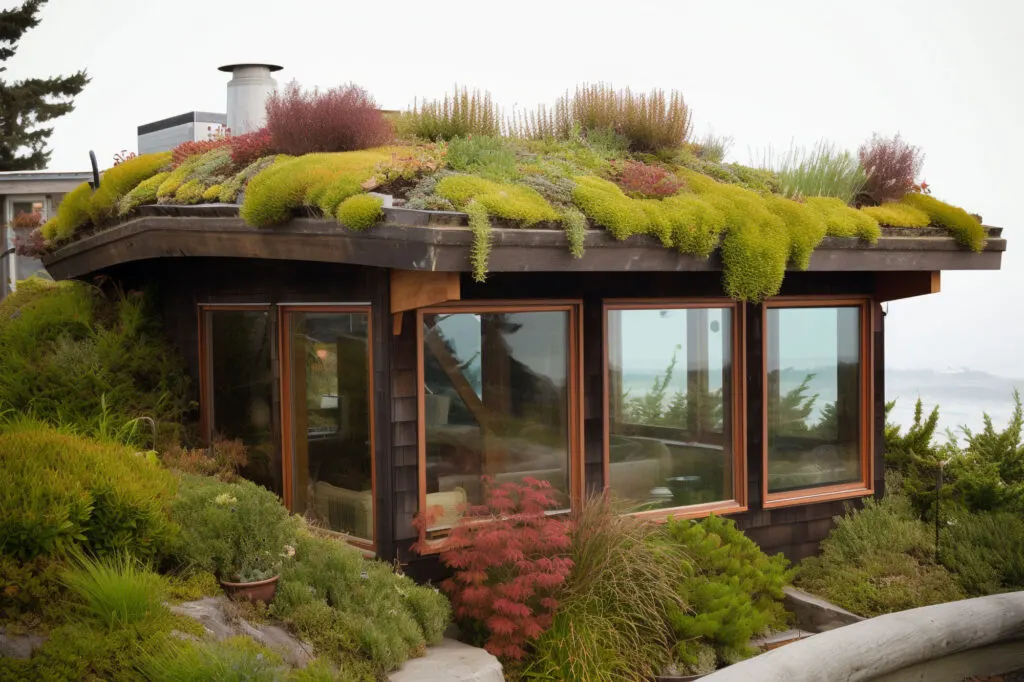
What is a living roof?
Living roofs have been around for a long time. In fact, the Hanging Gardens of Babylon, one of the Seven Wonders of the Ancient World, is believed to have had a living roof.
The concept of using vegetation to insulate and protect a building has been used throughout history, but it has gained popularity in recent years due to its sustainability benefits.
Living roofs can help reduce the urban heat island effect, improve air quality, and provide a habitat for wildlife.
Despite their long history, living roofs are still a viable option for sustainable roofing today. They can be a cost-effective solution for reducing energy use and lowering carbon emissions, making them an excellent choice for those looking to build or retrofit a green building.
North America has seen a surge in green roof installations, both in commercial buildings and residential structures. Cities like Chicago and Toronto are leaders in integrating green roof technology into urban planning, offering incentives for new construction and retrofitting existing buildings.
There are typically two types of green roofs: extensive and intensive. If you decide to build your own living roof, you’ll want to understand the differences between these so you’ll know which will work best for your situation.
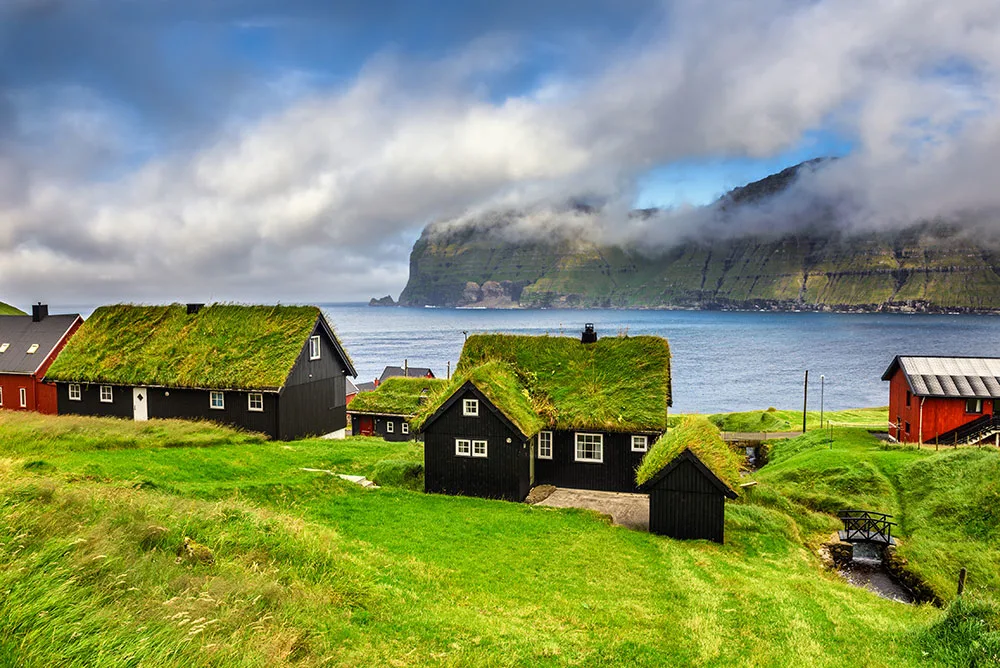
Extensive green roofs
Extensive green roofs are the more lightweight and versatile version of green roofing, often referred to as the more eco-friendly choice for everyday building.
Consisting of a thin layer of growing medium, usually ranging from 2 to 6 inches, extensive roofs are specifically designed for low maintenance and ease of installation.
The plants chosen for extensive roofs are typically hardy and drought-resistant, with sedums being a popular choice. These plants can thrive in harsh conditions and require little care, making them suitable for various climates.
What sets extensive green roofs apart is not only their simplicity but their adaptability. They can be installed on various types of buildings, from residential to commercial, and even on structures with a slight slope.
Extensive green roofs are not usually designed for public access, as their primary functions are environmental and energy benefits.
The initial costs and structural demands of extensive green roofs are often lower than their intensive counterparts, making them a more accessible option for those interested in green roofing.
They can be combined with other eco-friendly technologies such as solar panels, and they often serve as a stepping stone for cities and individuals looking to reduce their environmental impact.
In a nutshell, extensive green roofs are a practical and beautiful way to introduce green space into urban areas without the demands of more complex roof gardens. They symbolize a connection with nature that’s attainable and sustainable, bringing a touch of green to the gray cityscape.
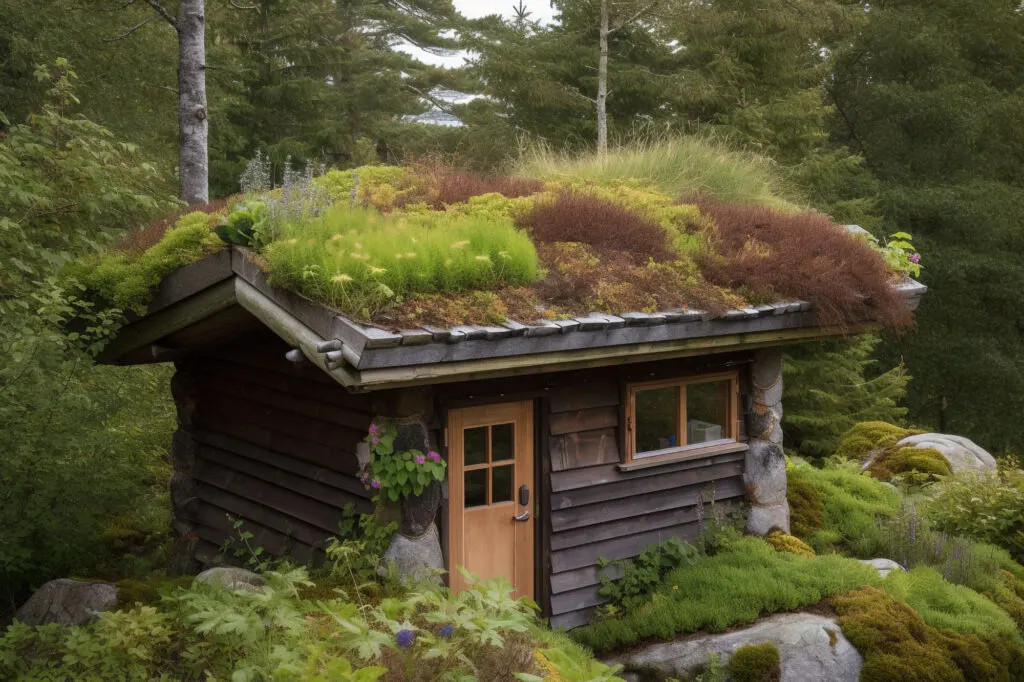
Intensive green roofs
Intensive green roofs, also known as roof gardens, are the luxurious cousins of extensive green roofs, offering depth, diversity, and design opportunities that go far beyond just planting.
These roofs often have a substantial growing medium that can be anywhere from 6 to 15 inches deep, or even more in some cases, allowing for a wider variety of plant growth.
What sets intensive green roofs apart is their ability to host a diverse array of vegetation, from lush grass and colorful flower beds to small trees and shrubs. Some even feature walkways, benches, and water features, creating a true garden oasis high above the city streets.
Unlike extensive roofs, intensive green roofs are often designed with public access in mind, providing spaces for relaxation, socialization, and even urban agriculture.
The structural support requirements for intensive roofs are understandably higher, considering the weight of the soil, plants, and any additional landscape features. Consulting with a structural engineer is a crucial step in the planning process, ensuring the building can handle the extra load.
Intensive green roofs also typically require more attention in terms of maintenance. Regular watering, pruning, and care are often necessary, similar to a traditional garden. This may include an irrigation system tailored to the specific needs of the plants selected.
Furthermore, the design of intensive green roofs often involves architects and landscape designers, as aesthetics and functionality must blend seamlessly. Whether it’s a tranquil retreat for building residents or a public space open to the community, these roofs offer a dynamic green space that can even increase the property value.
In essence, intensive green roofs are not just about the plants; they’re about creating a living ecosystem that supports both human interaction and environmental stewardship. They transform the mundane flat roof into a thriving, vibrant landscape, enriching urban life in more ways than one.
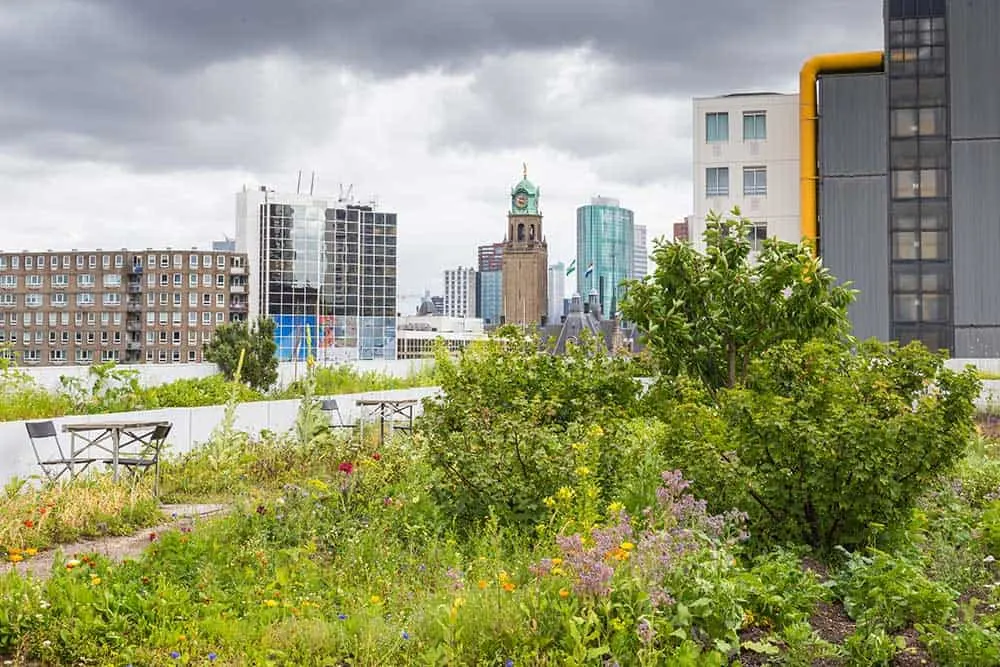
Living roof components and materials
Living roofs are complex systems that require careful planning and the right materials to function effectively. Here’s a breakdown of the essential components:
1. Waterproof Membrane: The foundational layer that protects the building from water leakage. This layer is critical to the success of a green roof and must be carefully selected and installed.
2. Root Barrier: Positioned above the waterproofing layer, the root barrier ensures that the roots of the plants don’t penetrate and damage the underlying structure.
3. Insulation: Depending on the design, some green roofs include an insulation layer to enhance energy efficiency further.
4. Drainage Layer: To prevent waterlogging and root rot, a proper drainage system is required. This layer collects excess water and channels it away from the roof, protecting the plant roots and the building below.
5. Filter Fabric: This layer acts like a sieve, keeping the growing medium from clogging the drainage layer while still allowing water to pass through.
6. Growing Medium: The soil or growing medium is a mix of organic matter, soil, and other materials that provide nourishment for plant growth. It’s specifically engineered for each type of green roof, extensive or intensive, to support the selected plants.
7. Plants: The choice of plants ranges widely from sedums and grasses to small trees and shrubs, depending on the type of green roof. Native plants and those adapted to local weather conditions are often preferred.
8. Irrigation System (Optional): Depending on the design and plant selection, an irrigation system might be incorporated to provide consistent water supply, especially in more intensive green roofs.
9. Wind and Safety Barriers (Optional): In areas with high winds or specific safety considerations, additional barriers may be implemented.
10. Structural Support: A critical, unseen component, the building itself must be able to bear the additional weight of the green roof system. Consulting a structural engineer is vital in this regard.
These components come together in harmony to create a living, breathing ecosystem on top of a building. From commercial buildings to private residences, understanding these materials and how they interact ensures that a green roof not only survives but thrives, becoming a beautiful and beneficial addition to the landscape.
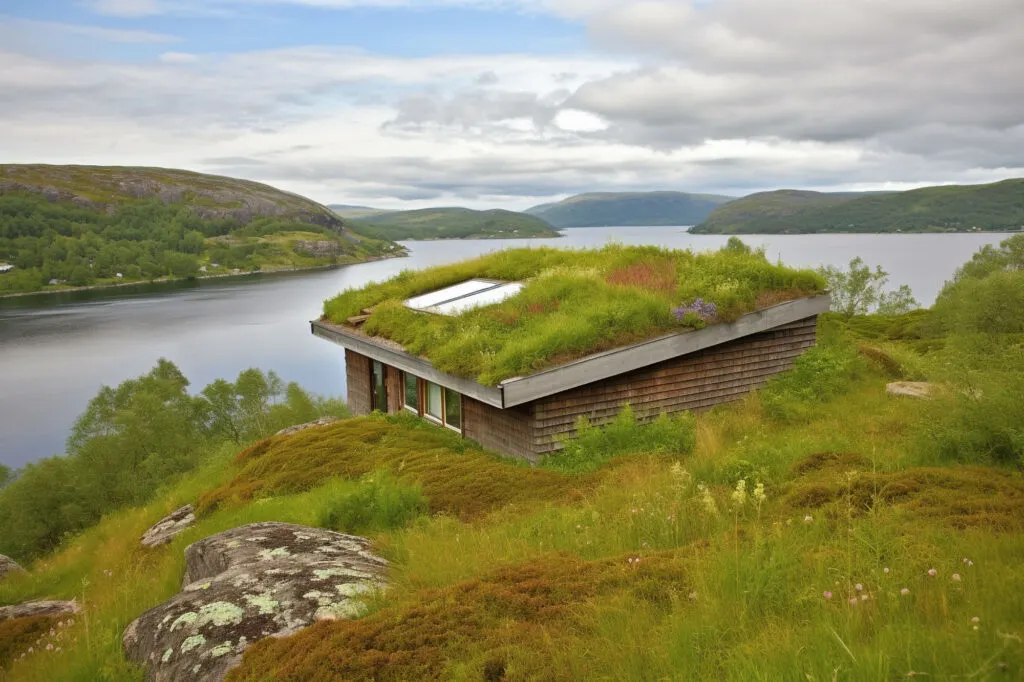
Environmental and economic benefits of green roofs
Living roofs aren’t just for aesthetics, though they are very beautiful. They also offer some substantial environmental and economical benefits:
Controlling stormwater runoff
Green roofs act as a sponge, absorbing rainwater and thereby reducing the stormwater runoff that can flood urban streets. This helps in reducing pressure on sewage systems and minimizes erosion.
Air pollution reduction
Plants are nature’s air purifiers, removing pollutants and enhancing air quality. In urban areas where air pollution is a constant concern, green roofs can significantly contribute to a cleaner atmosphere.
Reducing the heat island effect
The urban heat island effect is what happens as urban areas develop and changes occur in the landscape. As open land and vegetation are replaced with buildings and roads, surfaces become hot and dry, absorbing and retaining the heat of the sun. Therefore, urban regions become much warmer than surrounding rural areas.
This excess heat causes increased energy consumption for cooling, resulting in higher levels of pollution. Hot streets also heat stormwater as it runs over the surfaces, impacting waterways when the water is released back into them.
By covering up black rooftops – some of the hottest surfaces in cities – with vegetation, a huge reduction in the heat island effect is achievable. Much of the light that would otherwise become heat energy is absorbed by plants. Also through the daily evaporation cycle of vegetation, living roofs and walls can cool cities significantly during hot summer months.
Energy efficiency
One of the most tangible benefits of green roofs is energy cost savings. The layer of plants and growing medium provides insulation, reducing the need for heating in the winter and air conditioning in the summer months.
Enhancing building value
Green roofs can increase a commercial building’s appeal to potential tenants and buyers. Whether in commercial buildings or residential areas, a well-maintained green roof can increase property value by offering aesthetic and environmental benefits.
Green roofs and solar panels: a perfect match
Combining solar panels with a living roof might sound futuristic, but it’s a reality for many modern buildings. Solar panels can benefit from the cooling effect of the green roof, improving their efficiency, while the green roof can benefit from the shade and structural support provided by the solar panel system.
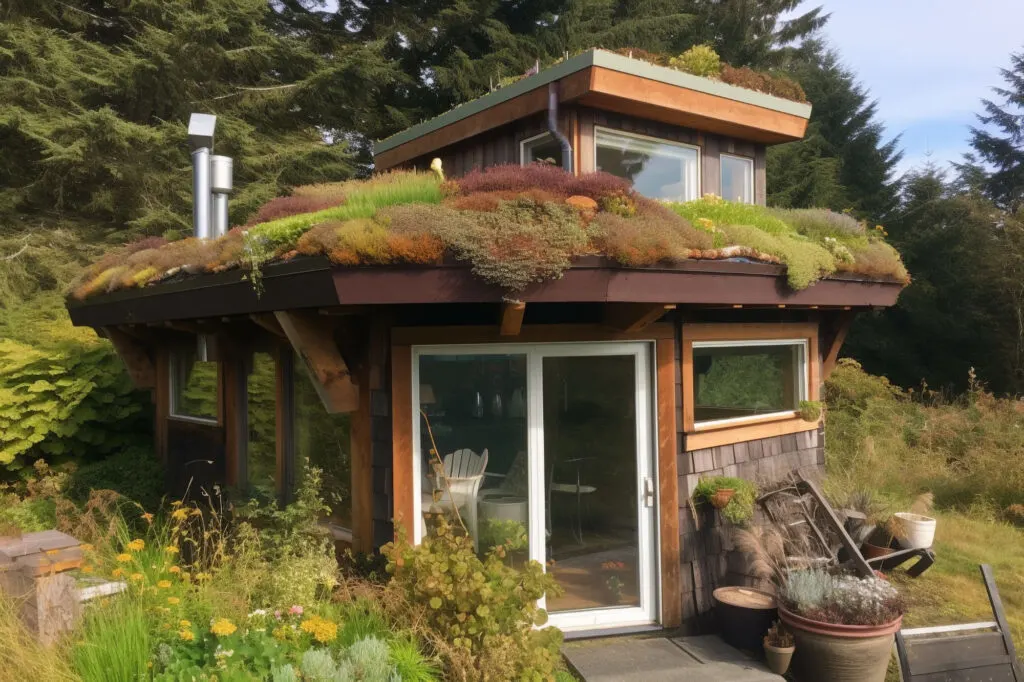
Plant selection and maintenance
Native & low maintenance plants
Choosing native plants is critical for the success of a green roof. They are adapted to the local climate and are typically more resistant to local diseases and pests.
For those who prefer a hands-off approach, sedum roofs are a popular choice. Sedum is a type of succulent that requires minimal care and can thrive in various climates.
Irrigation and drainage systems
The irrigation system plays a vital role in green roof maintenance, particularly in intensive roofs. While extensive roofs often rely on natural precipitation, some may need additional watering.
The drainage system must be carefully designed to avoid waterlogging and ensure that excess water is removed efficiently.
Green roof challenges and considerations
Structural and weather considerations
Green roofs add significant weight to a building, and structural support must be evaluated by a structural engineer. Waterproofing layers and other materials must be carefully selected to avoid leaks and other issues.
In addition, green roofs must be designed to withstand local weather conditions, including high winds. Plant selection must consider wind resistance and physical barriers may be needed to protect the plants.
Cost considerations
Although green roofs offer long-term savings on energy costs and other benefits, the initial installation can be expensive. It requires specialized roofing material and often professional consultation, adding to the costs.
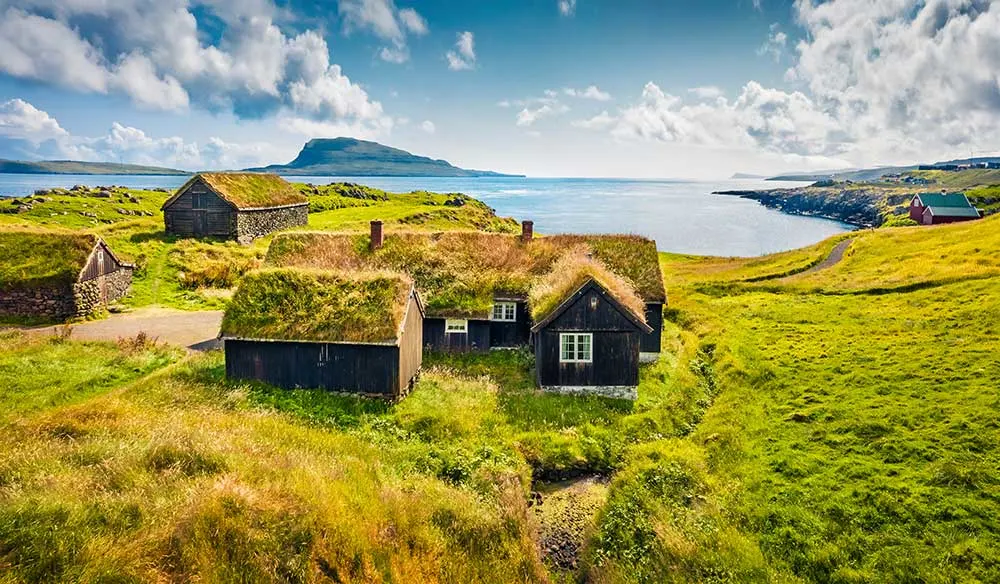
Conclusion
Green roofs are no longer just an attractive feature for eco-conscious individuals. They are a vital part of modern urban planning, offering environmental, economic, and social benefits.
The integration of various green roof types, from the elegant extensive green roofs to the robust intensive roofs, illustrates a growing movement toward sustainable living.
Whether you’re a business owner looking to cut energy costs, a homeowner interested in boosting your property’s appeal, or an urban dweller longing for more green space, the world of green roofs offers something for everyone.
From energy efficiency to stormwater control, plant growth to cooling costs, green roofs transform the conventional into the extraordinary.
The next time you’re in a city, look up. You might just spot a thriving garden on a rooftop, a symbol of a greener future where concrete meets chlorophyll, and traditional roofs blossom into living, breathing ecosystems.
Want to see some cool green rooftops people have put on their homes? Check out this studio cabin with a living roof patio and this beautiful shipping container home with a living roof for inspiration!
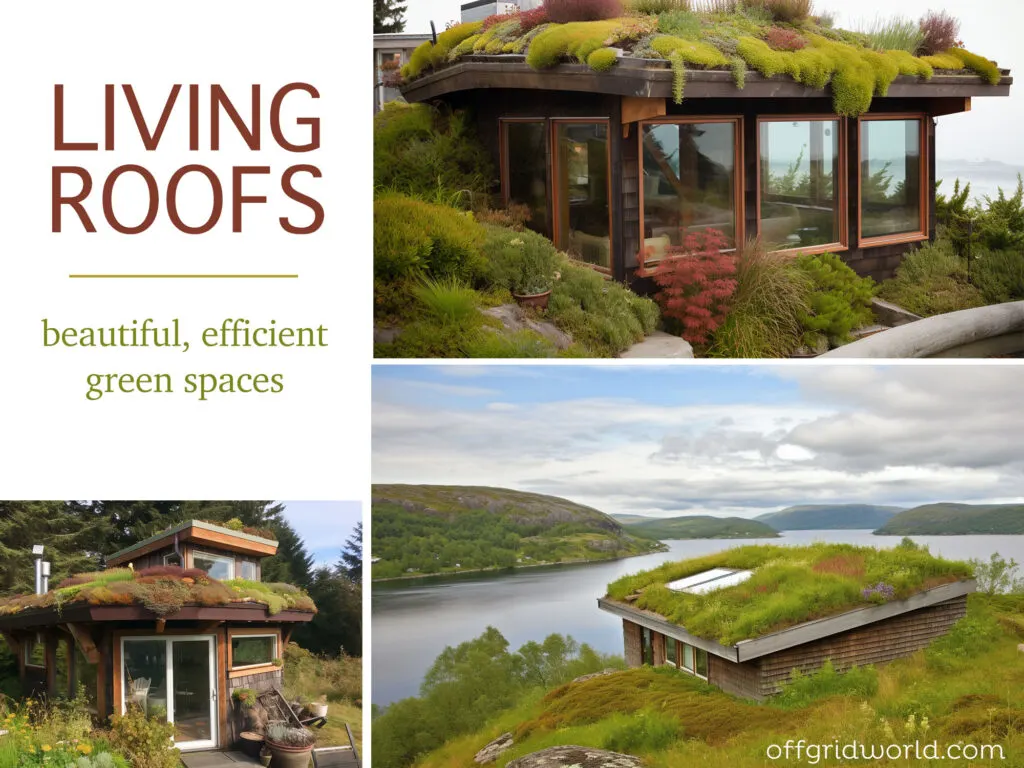
Sources: Greenroofs.org

Grow a Living Roof or Green Roof | Sustainable Living | Special Finds
Sunday 26th of August 2018
[…] published an interesting article about growing a living roof. You can read it here. They describe living roofs as “beneficial and […]
Grow a Living Roof - Special Finds
Thursday 10th of July 2014
[…] This article courtesy of OFFGrid World […]